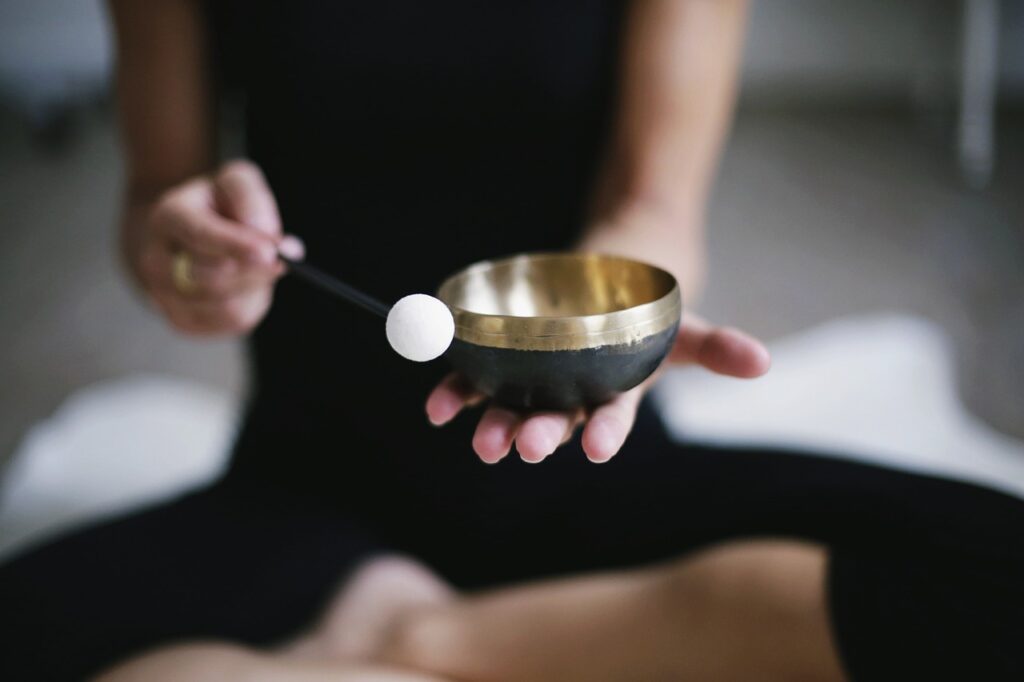Table of Contents
In this post, we’ll explore the science-backed benefits of mindfulness meditation, as well as practical tips and techniques for incorporating mindfulness into your daily life. Whether you’re a beginner or an experienced meditator, this guide has something for everyone.
Together, we’ll embark on a journey of self-discovery and inner peace, as we explore the transformative power of mindfulness meditation. So take a deep breath, get comfortable, and let’s dive in!
The key to mindfulness meditation is to approach it with an open mind and a positive attitude. With the right techniques and guidance, you’ll be amazed at how quickly you can transform your health and well-being.

Benefit of Mindfulness Meditation
When it comes to mindfulness meditation, the benefits are truly endless. Not only can it promote overall well-being and happiness, but it can also have a profound impact on our physical and mental health. Here are just a few of the many benefits of mindfulness meditation:
- Reducing Stress and Anxiety: Mindfulness meditation has been shown to reduce the levels of the stress hormone cortisol in the body, helping to reduce feelings of stress and anxiety. It can also promote a sense of calm and relaxation, allowing us to better cope with life’s challenges.
- Improving Focus and Productivity: Mindfulness meditation can improve our ability to focus and concentrate, making us more productive and efficient in our daily lives. It can also enhance our creativity and problem-solving abilities.
- Boosting Emotional Resilience: Mindfulness meditation can help build emotional resilience and promote a more positive outlook on life. It can also improve our ability to regulate our emotions and respond to stressful situations in a more constructive way.
- Enhancing Physical Health: Mindfulness meditation has been shown to have a number of physical health benefits, including reducing inflammation, lowering blood pressure, and improving sleep quality. It can also boost the immune system and promote overall physical health and well-being.
Whether you’re looking to reduce stress, improve your focus, or enhance your overall health and well-being, mindfulness meditation is an incredibly powerful tool that can help you achieve your goals.
How to Get Started
If you’re new to mindfulness meditation, getting started can seem daunting at first. But fear not! With a few simple tips and tricks, you can start your meditation practice with confidence and ease. Here are some suggestions for getting started:
- Find a Quiet Space: To get the most out of your mindfulness meditation practice, it’s important to find a quiet space where you can be alone and free from distractions. This might be a spare room in your house, a quiet corner of your backyard, or even a local park or nature reserve.
- Set a Regular Practice Time: Consistency is key when it comes to mindfulness meditation. Try to set aside a regular time each day to practice, whether it’s first thing in the morning or just before bed. This will help you establish a routine and make meditation a habit.
- Use Guided Meditations or Apps: If you’re new to meditation, guided meditations or apps can be a helpful way to get started. There are many free and paid options available, such as Headspace, Calm, and Insight Timer, that offer guided meditations for different levels and goals.
The key to starting a mindfulness meditation practice is to approach it with an open mind and a sense of curiosity. Don’t worry if you find it challenging at first – with practice, you’ll soon start to experience the many benefits of mindfulness meditation.

Common Obstacles and How to Overcome Them
Starting a mindfulness meditation practice is not always easy, and many people face common obstacles that can make it difficult to get started or maintain a regular practice. Here are some common obstacles that people may face when starting a mindfulness meditation practice, and some suggestions and strategies for overcoming them:
- Difficulty Focusing the Mind: One of the most common obstacles people face when starting a mindfulness meditation practice is difficulty focusing the mind. To overcome this obstacle, try starting with short guided meditations or using a meditation app to help focus the mind. Also, remember to be patient with yourself and avoid judging yourself for wandering thoughts.
- Finding Time to Meditate: Another common obstacle people face is finding the time to meditate. To overcome this obstacle, try to incorporate meditation into your daily routine, such as meditating first thing in the morning or during your lunch break. Start with shorter sessions and gradually increase the time as you become more comfortable.
- Physical Discomfort: Some people may experience physical discomfort during meditation, such as discomfort in the legs or back. To overcome this obstacle, try adjusting your posture or using a cushion or chair to provide more support. You can also try incorporating gentle yoga or stretching into your routine to help prepare your body for meditation.
In order to overcoming obstacles when starting a mindfulness meditation practice, the key is to approach them with curiosity and a sense of non-judgment. With practice and patience, you can overcome these obstacles and reap the many benefits of mindfulness meditation.

Incorporating Mindfulness into Daily Life
While formal meditation practice is an important part of a mindfulness practice, it’s also important to incorporate mindfulness into your daily life. Here are some tips and suggestions for incorporating mindfulness into your daily routine:
- Practice Mindful Breathing: One of the simplest ways to incorporate mindfulness into your daily life is to practice mindful breathing. This involves taking a few deep breaths and focusing your attention on the sensations of your breath as it enters and exits your body. You can do this anytime, anywhere, such as during a break at work, while waiting in line, or before a meeting.
- Use Mindfulness to Cope with Stress: Mindfulness can be a powerful tool for coping with stress and challenging situations. Try incorporating mindfulness into your daily routine by taking a few moments to breathe deeply and focus your attention on the present moment whenever you feel stressed or overwhelmed.
- Practice Gratitude: Another way to incorporate mindfulness into your daily life is to practice gratitude. Take a few moments each day to reflect on the things you’re grateful for, such as your health, your relationships, or the simple pleasures in life. This can help shift your focus from what’s lacking in your life to what you have to be thankful for.
Mindfulness is not just about formal meditation practice – it’s about cultivating a sense of awareness and presence in all aspects of your life. By incorporating mindfulness into your daily routine, you can enhance your overall well-being and happiness.
Conclusion
In conclusion, mindfulness meditation is a powerful tool for promoting overall health and well-being. By reducing stress and anxiety, improving focus and productivity, boosting emotional resilience, and enhancing physical health, mindfulness meditation can have a profound impact on our lives. By finding a quiet space, setting a regular practice time, and using guided meditations or apps, you can easily incorporate mindfulness meditation into your daily routine.
Remember to approach your practice with an open mind and a sense of curiosity, and to be patient with yourself as you develop your skills. If you’re interested in learning more about mindfulness meditation, there are many great resources available, including books, podcasts, and online courses. So why wait? Start your own mindfulness meditation practice today and experience the transformative power of mindfulness for yourself.